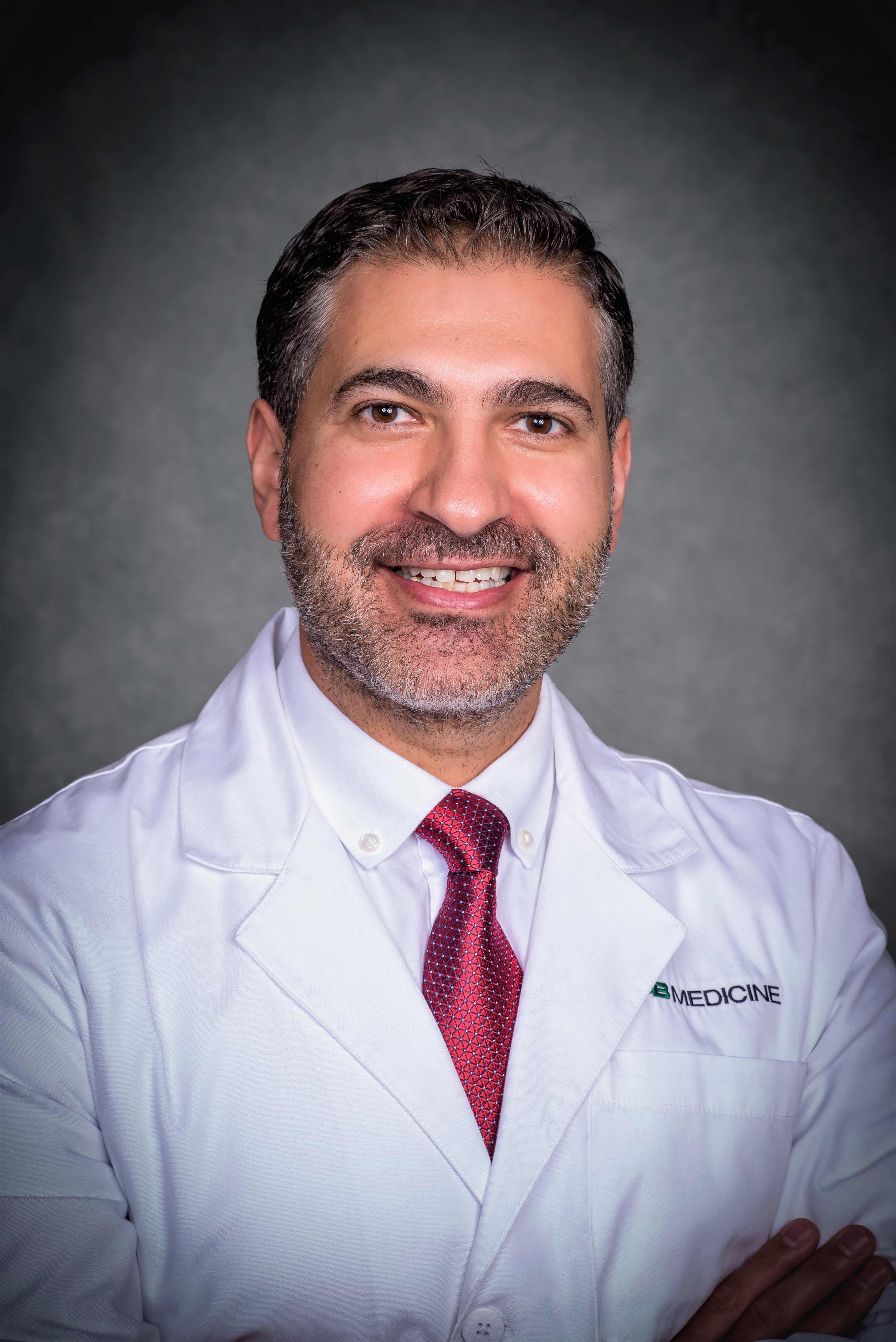On Thursday, January 20, 2022, the University of Alabama at Birmingham Marnix E. Heersink School of Medicine announced the first peer-reviewed research outlining the successful transplant of genetically modified, clinical-grade pig kidneys into a brain-dead human individual, replacing the recipient’s native kidneys. The study is a promising step toward prospective clinical trials of kidney transplant from pigs to living humans, to address the worldwide organ shortage crisis.
The team at UAB Pathology was excited to play a crucial role in this groundbreaking study by providing details of pathological findings on diagnostic biopsies throughout the procedure.
“The most important step you take when you do a transplant is to monitor and remediate graft rejection,” says Huma Fatima, M.D., Associate Professor and Renal Section Head, UAB Pathology. “It is very difficult to diagnose transplant rejection without doing biopsies—they are the gold standard for diagnosis.”
 Huma Fatima, M.D.
Huma Fatima, M.D.
Fatima was involved with the transplant program as the clinician providing diagnoses and assessing for graft rejection, on multiple biopsies taken over the course of several days that the kidney was in the donor’s body.
“Every biopsy came to our lab and was studied the same way as human biopsies to see what changes were taking place,” Fatima says.
She had previously worked with Jeremy Foote, Ph.D., Department of Microbiology, on pig-to-non-human primate (NHP) kidney transplantation, the results of which were published in the Official Journal of the International Xenotransplantation Association in October 2021 (https://doi.org/10.1111/xen.12715, “Histopathology of pig kidney grafts with/without expression of the carbohydrate Neu5Gc in immunosuppressed baboons”).
Fatima explains that there are two major types of rejection in transplants, “pathogenesis-wise: One involves antibodies and the other involves inflammatory cells (predominantly T lymphocytes).” Transplant patients receive medication that lowers the risk of cell-mediated rejection/acute cellular rejection (ACR), in the first few days of transplant.
The antibody mediated rejection, based on the time of occurrence, is further subdivided into hyperacute rejection and acute antibody mediated rejection (ABMR). Hyperacute rejection occurs at the time of transplant due to preexisting antibodies in the recipient that damage the graft immediately after reperfusion. It is classically seen with incompatible transplants. Acute ABMR occurs when a pre-sensitized recipient develops a threshold level of antibodies against donor antigens after transplantation.
“To confirm any type of rejection, we need pathology to identify specific morphologic features,” Fatima says. “From a perspective of rejection, the study was an achievement in part, as hyperacute rejection was not observed, similar to NHP, providing significant evidence that existing genetic modification in pigs is indeed compatible with humans.”
 Sameer Al Diffalha, M.D.During the course of the procedure, the xenograft never developed ACR; however, there were morphologic features on light microscopy that raise the possibility of acute ABMR, Fatima says. The confirmatory test, immunohistochemical stain for C4d, was negative. “This is an unresolved issue that demands additional studies to improve xenograft survival.”
Sameer Al Diffalha, M.D.During the course of the procedure, the xenograft never developed ACR; however, there were morphologic features on light microscopy that raise the possibility of acute ABMR, Fatima says. The confirmatory test, immunohistochemical stain for C4d, was negative. “This is an unresolved issue that demands additional studies to improve xenograft survival.”
Fatima acknowledges Terrance Winfrey and Jacinta Taylor, Histology Technicians in the UAB Surgical Pathology/Special Procedures Laboratory, for
their support of testing.
UAB’s Tissue Biorepository (UAB-TBR), led by Director Sameer Al Diffalha, M.D., Associate Professor of Anatomic Pathology, provided approval to process the tissue samples for detection of antibody or cellular rejection. This step was fundamental in evaluating the success of the transplant process. The TBR service was utilized in collaboration with UAB’s anatomic pathology lab, led by Cristina Magi Galluzzi, M.D., Ph.D., C. Bruce Alexander Endowed Professor and Division Director, Anatomic Pathology.
“A well-established institutional biorepository is crucial for future discoveries and advancement of medicine efforts that help patients live a longer, healthier life,” says Al Diffalha.
“We are proud to be playing a key role in this multi-disciplinary, cutting-edge research at UAB,” says George Netto, M.D., Robert and Ruth Anderson Endowed Chair, UAB Pathology. “This collaborative work is setting a course for the future of animal-to-human organ and blood transplantation. We look forward to collaborating with our partners in the Departments of Surgery and Medicine in advancing these procedures, offering hope for patients in need.”
By Christina Crowe